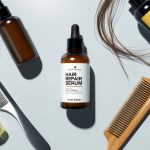How to Reduce Acne Scars Naturally: Proven Skincare Ingredients and Tips
Key Natural Ingredients and Their Proven Benefits
Natural ingredients play a significant role in reducing the appearance of acne scars by supporting healing, soothing inflammation, and promoting skin regeneration.
Both plant-derived extracts and vitamins offer practical, science-backed benefits for people looking to improve scar texture and fade discoloration.
Aloe Vera for Soothing and Healing
Aloe vera is widely recognized for its healing and anti-inflammatory properties.
The gel contains polysaccharides and gibberellins that stimulate cell growth and collagen production, which can help lessen the appearance of acne scars.
When used regularly, aloe vera may reduce redness and support the skin’s natural repair process.
Key benefits of aloe vera include:
- Hydration: Deeply moisturizes dry or damaged skin.
- Mild exfoliation: Contains enzymes that help slough off dead skin cells.
- Antioxidant action: Neutralizes free radicals that can delay healing.
Those with sensitive or inflamed skin often find aloe vera gels or creams non-irritating and soothing.
It can be applied directly to clean skin, making it a simple addition to any daily skincare routine.
Centella Asiatica in Scar Recovery
Centella asiatica, also known as tiger grass or gotu kola, is valued in traditional herbal medicine for its wound-healing abilities.
Its active compounds, such as asiaticoside and madecassoside, have been shown to support collagen synthesis, which is crucial for repairing damaged skin and smoothing acne scars.
The use of centella asiatica extract in creams and serums helps:
- Reduce scar thickness: Supports faster tissue remodeling.
- Improve skin elasticity: Enhances suppleness and resilience.
- Calm inflammation: Minimizes redness and irritation.
Clinical evidence supports centella as a beneficial option for post-acne skin, especially in combination with other antioxidants.
For many users, centella-based products offer visible improvement in skin texture over several weeks of consistent use.
Vitamin C and Antioxidants for Brightening
Vitamin C is a powerful antioxidant that not only protects the skin from environmental damage but also plays a direct role in fading hyperpigmentation.
Topical Vitamin C serums are well-researched for their ability to inhibit melanin production, lightening dark spots left by acne scars and promoting a more even skin tone.
Additional antioxidants found in natural ingredients—such as vitamin E and ferulic acid—work alongside vitamin C to enhance its brightening and anti-inflammatory effects.
Key benefits include:
- Brighter complexion: Reduces dark marks and promotes radiance.
- Collagen support: Boosts the skin’s repair and plumping processes.
- Protection: Shields the skin from oxidative stress.
Products containing stabilized Vitamin C and other antioxidants are most effective when applied in the morning under sunscreen, helping reduce new marks and supporting ongoing scar fading.
For more on these ingredients, see Healthline’s detailed overview of acne scar treatments.
Effective Exfoliating Ingredients for Acne Scars
Remedying post-inflammatory hyperpigmentation (PIH), uneven texture, and clogged pores relies heavily on selecting the right exfoliating ingredients.
Chemical exfoliators can improve the appearance of acne scars by accelerating cell turnover, diminishing discoloration, and helping prevent new breakouts.
Lactic Acid and Mandelic Acid for Gentle Exfoliation
Lactic acid and mandelic acid are alpha-hydroxy acids (AHAs) known for their mild yet effective exfoliating properties.
These ingredients break down the bonds between dead skin cells, encouraging their removal and making the skin surface appear brighter and more even.
Compared to other acids, lactic acid is less likely to cause irritation and is suitable for sensitive skin types.
It helps reduce the appearance of dark spots left by acne and smooths rough, uneven texture.
Mandelic acid, derived from almonds, has a larger molecular size, which allows it to penetrate the skin more slowly and evenly.
This results in gentle exfoliation and reduces the risk of redness or sensitivity.
Using lactic or mandelic acid as part of a regular skincare routine can gradually fade hyperpigmentation and encourage softer, clearer skin.
Both are ideal for those new to chemical exfoliation or with concerns about sensitivity.
Salicylic Acid: Best for Oily and Acne-Prone Skin
Salicylic acid is a beta-hydroxy acid (BHA) that excels at penetrating oily skin and dissolving the debris inside clogged pores.
It helps clear blackheads and reduces the chance of future breakouts, making it especially effective for those with oily or acne-prone skin.
Unlike AHAs, salicylic acid is oil-soluble.
This property lets it travel deeper into pores and break down sebum.
As an exfoliator, it addresses both active blemishes and the lingering marks they leave behind.
Salicylic acid treatments can be used as spot treatments or as leave-on exfoliators to refine skin texture and fade PIH.
Professional treatments with higher concentrations may be used under supervision to target more stubborn scars and improve overall skin tone.
Learn more about the recommended use and concentrations at this expert guide.
Glycolic Acid for Smoother Texture
Glycolic acid, one of the most widely researched AHAs, is prized for its ability to resurface skin and boost radiance. With its small molecular size, glycolic acid penetrates skin efficiently, making it a powerful ingredient for improving uneven texture and minimizing acne scars.
This acid stimulates collagen production alongside removing dead cells at the surface. Regular use leads to a smoother, plumper complexion and gradually diminishes the visibility of both shallow acne scars and blotchy pigmentation.
Individuals with non-sensitive skin often see results more rapidly when using glycolic acid, whether in chemical peels or daily exfoliating serums. Those interested in glycolic acid for acne scars can find details about effective exfoliating products in this comprehensive overview.



